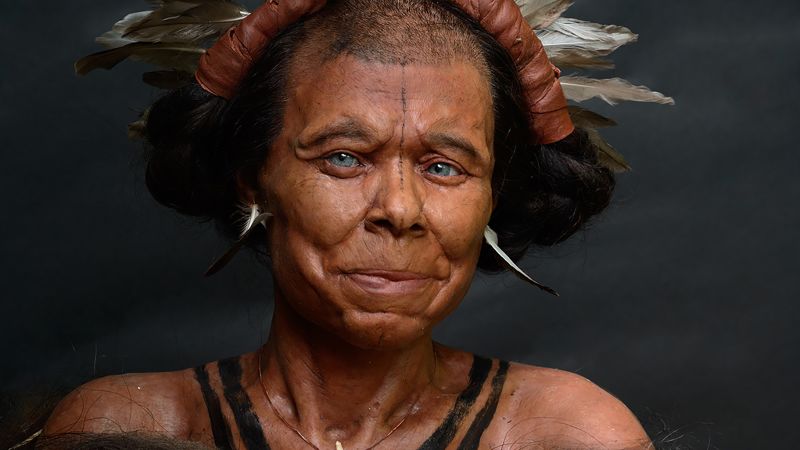A group of researchers has made groundbreaking strides in understanding prehistoric populations through archaeological findings. A study focused on the remains of a woman who lived approximately 10,500 years ago in present-day Belgium has yielded fascinating insights into her appearance and the cultural practices of her time. Utilizing ancient DNA, the scientists successfully recreated a facial reconstruction of the woman, which is situated within the context of the Mesolithic era.
The research, spearheaded by a team from Ghent University, revealed that this prehistoric woman likely had striking blue eyes and skin that was somewhat lighter than that of her contemporaries from the Mesolithic period in Western Europe. This finding challenges previous assumptions regarding the genetic uniformity of European hunter-gatherers, suggesting instead that considerable variation in skin color existed among various populations. Isabelle De Groote, the archaeologist leading the research team, stated that the woman belonged to the same ancestral group as the renowned Cheddar Man, who lived in what is now the UK, but was characterized by a lighter complexion.
The investigative work surrounding this ancient individual also provided insights into her age and physical traits. De Groote noted that the findings indicated she was between 35 and 60 years old at the time of her death, and her skull exhibited distinct features, such as a high nasal bridge and prominent brow ridges, signifying strong physical characteristics even for a female inhabitant of that period.
The skeletal remains were uncovered in the Margaux cave within the Dinant region during an archaeological dig conducted from 1988 to 1989. Notably, the excavation revealed the presence of eight women buried together – a rarity in Mesolithic burial sites, which typically include a mix of genders and ages. This unusual finding prompted De Groote to explore the possibility of ritualistic practices. The bodies exhibited traces of ochre, a pigment associated with ceremonial activities, and many skeletons were covered with fragments of stone, while some showed signs of post-mortem manipulation, such as cut marks.
Further exploration of the site indicated that the burial cave had served as a place of memory for several generations, suggesting that these hunter-gatherers maintained a connection to communal rites despite their mobile lifestyles. The complexity of the burial customs observed raises intriguing questions about the societal structures and cultural practices of these early communities.
Philippe Crombé, another archaeologist involved in the project, expressed surprise regarding the light skin color determined from the DNA analysis, particularly as the known genetic makeup of other analyzed Mesolithic individuals pointed to a degree of uniformity. He underlined the importance of recognizing variability within past populations, similar to the ethnic diversities observed today.
When the remains were initially excavated, DNA analysis technologies were not as advanced as they are now. With the development of contemporary techniques, the project has been able to reinterpret and analyze findings from older excavations, culminating in high-quality DNA retrieval that allowed for the in-depth reconstruction of the woman’s features. Her physical appearance was pieced together using DNA data for hair, eye, and skin color, complemented by archaeological artifacts found in the vicinity, which also contributed to a broader understanding of her daily life and environment.
The excavation sites near the River Meuse unveiled further evidence pointing to a nomadic lifestyle among these hunter-gatherers. Findings included stone tools and remnants of wild game, indicating their reliance on natural resources for sustenance. Crombé noted that this dependence necessitated regular movement and shifts in settlement locations.
As researchers delve deeper into these prehistoric societies, many questions arise regarding their social dynamics and environmental interactions. The team aims to analyze the interrelationships among individuals buried together and investigate the extent of fish consumption among these communities, thereby enriching our understanding of a crucial chapter in Western European prehistoric history. Their continued inquiries reveal the complexities and nuances of Mesolithic life that were previously veiled in mystery.



